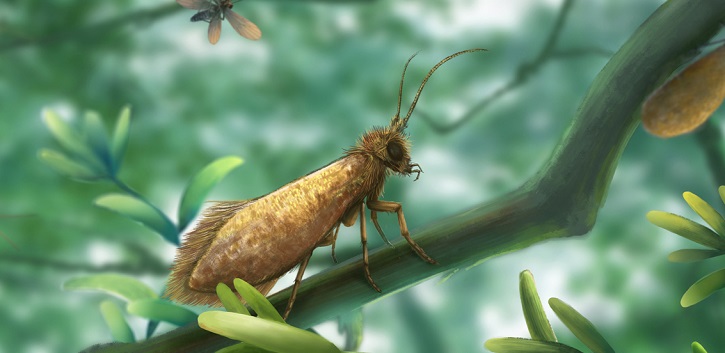UCC scientists discover ancient butterfly wing colours

New research by scientists at University College Cork has revealed the wing colours of some of the oldest ancestors of modern butterflies and moths.
The 180 million-year-old fossils, preserved in rocks and amber, would have had bronze to golden colours produced by microscopic ridges and grooves on the surface of their wing scales. These fossils extend the evidence for light-scattering structures in insects by more than 130 million years.
"We didn’t expect to find wing scales preserved, let alone microscopic structures that produce colour." (UCC palaeobiologist Dr Maria McNamara) - Great coverage of this @UCCResearch story in @Independent @yorkshirepost and more...#UCCOurCampus https://t.co/KA0YmRJPaB pic.twitter.com/X3wGTf385N
— UCC Ireland (@UCC) April 12, 2018
UCC palaeobiologists Dr Maria McNamara and Dr Luke McDonald reconstructed the colours using powerful electron microscopes and optical modelling. Similar ridges and grooves are still seen in modern primitive moths.
According to Dr McNamara, “these fossils are among the oldest known representatives of butterflies and moths. We didn’t expect to find wing scales preserved, let alone microscopic structures that produce colour. This tells us that colour was an important driving force in shaping the evolution of wings even in the earliest ancestors of butterflies and moths”.
Gold metallic colours of ancient butterfly ancestors are revealed https://t.co/hkwTe6ueK2 - Feat. UCC palaeobiologists Dr Maria McNamara and Dr Luke McDonald #UCCOurCampus via @MailOnline
— UCC Ireland (@UCC) April 12, 2018
Insects have evolved an amazing diversity range of photonic nanostructures that can produce iridescence, metallic colours, and other eye-catching effects that play a vital role in visual signalling, Dr McDonald added.
The results of the study will be published in the journal Science Advances.
UCC scientists discover ancient butterfly wing colours https://t.co/kiWPK76MZ1
— UCC Ireland (@UCC) April 11, 2018
For more on this story contact:
Lynne Nolan, Media & PR Officer, UCC: 087 210 1119.
